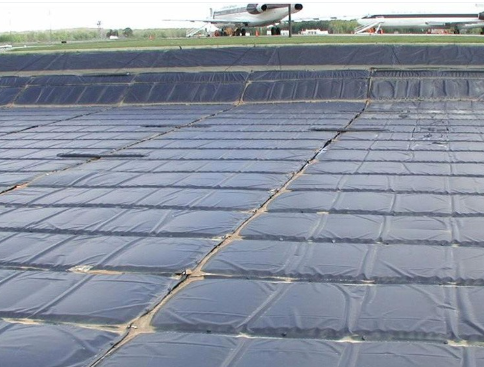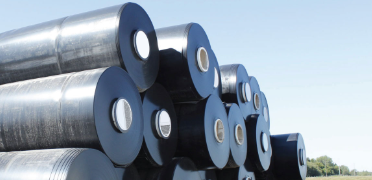- Understanding the Role of Geomembrane Liners in Waste Management
- Innovations in Geomembrane Liners for Water Management
- Geomembrane Liners: A Comprehensive Guide
- The Future of Geomembrane Liners in Civil Engineering
- Geomembrane Liners: Enhancing Landfill Stability
Manager:
WhatsApp:+86 177 0135 2670
Tel:+86 177 0135 2670
Email:marketing@okorder.com
Address:3rd Floor, No.2 Building, No.1 Sanlihe Road
What are the mechanical properties of geomembrane?
Geomembranes are essential components in various engineering applications, serving as barriers to contain liquids or gases, prevent contamination, and provide stability to infrastructure. Among the different types of geomembranes, composite geomembranes and high-density polyethylene (HDPE) geomembranes stand out for their mechanical properties and wide-ranging applications. Understanding the mechanical characteristics of these geomembranes is crucial for ensuring their effective performance in diverse environmental conditions and construction projects.

Composite Geomembrane: A Blend of Strength and Flexibility
Composite geomembranes are engineered by combining different materials to enhance specific properties such as strength, flexibility, and impermeability. These geomembranes typically consist of multiple layers, with each layer contributing distinct mechanical attributes to the overall structure.
Tensile Strength:
One of the key mechanical properties of composite geomembranes is tensile strength, which refers to the material's ability to withstand pulling forces without breaking. Composite geomembranes exhibit high tensile strength due to the combination of materials like Geotextiles, woven fabrics, and geomembranes. The interlocking of these layers creates a strong and durable barrier that can withstand significant stresses without compromising integrity.
Flexibility and Elongation:
Flexibility and elongation are vital mechanical properties that determine the geomembrane's ability to conform to irregular surfaces and accommodate ground movements. Composite geomembranes typically incorporate flexible materials like high-density polyethylene (HDPE) and ethylene propylene diene monomer (EPDM) to provide excellent flexibility while maintaining structural integrity. This flexibility allows the geomembrane to adapt to changes in substrate conditions and minimize the risk of cracking or tearing.
Puncture Resistance:
In applications where geomembranes are exposed to sharp objects or abrasive materials, puncture resistance is a critical mechanical property. Composite geomembranes are engineered to withstand puncture forces by incorporating puncture-resistant layers such as nonwoven geotextiles or reinforced geomembranes. This enhanced puncture resistance ensures long-term performance and minimizes the risk of leaks or breaches in containment systems.
Seam Strength:
The strength of seams plays a crucial role in the overall performance of composite geomembranes, especially in large-scale applications such as landfill liners or reservoirs. Manufacturers utilize advanced welding techniques such as heat fusion or extrusion welding to create strong and durable seams that withstand environmental stresses and maintain containment integrity. Proper seam design and installation are essential to maximize the geomembrane's mechanical properties and ensure long-term reliability.
Chemical Compatibility:
Composite geomembranes are often employed in environments where exposure to chemicals or pollutants is a concern. Therefore, chemical compatibility is a vital mechanical property that influences the geomembrane's resistance to degradation and chemical attack. By selecting materials with high chemical resistance, such as HDPE or chlorosulfonated polyethylene (CSPE), composite geomembranes can effectively withstand exposure to a wide range of aggressive substances without compromising performance.
High-Density Polyethylene Geomembrane: Engineering Excellence in Containment
High-density polyethylene (HDPE) geomembranes are renowned for their exceptional mechanical properties, making them a preferred choice for various containment applications, including landfill liners, pond liners, and mining operations. hdpe Geomembranes are manufactured through a process of extrusion and possess unique characteristics that contribute to their mechanical robustness and longevity.
Density and Molecular Structure:
The mechanical properties of HDPE geomembranes are heavily influenced by their molecular structure and high-density composition. HDPE molecules are densely packed together, resulting in a highly crystalline structure that imparts superior strength and stiffness to the geomembrane. This dense molecular arrangement also enhances resistance to stress cracking and environmental degradation, ensuring long-term performance in demanding applications.
Tensile Strength and Modulus:
HDPE geomembranes exhibit exceptional tensile strength and modulus, allowing them to withstand significant loads and deformations without failure. The high tensile strength of HDPE enables the geomembrane to resist tearing or puncturing forces, while the modulus ensures dimensional stability and prevents excessive elongation under stress. These mechanical properties make HDPE geomembranes well-suited for applications requiring structural integrity and long-term durability.
Creep Resistance:
Creep resistance is another essential mechanical property of HDPE geomembranes, particularly in applications where sustained loads or elevated temperatures are present. HDPE's inherent resistance to creep deformation ensures that the geomembrane maintains its shape and performance over time, even under challenging environmental conditions. This resistance to creep enhances the geomembrane's ability to provide reliable containment and stability in critical infrastructure projects.
UV Resistance:
Exposure to ultraviolet (UV) radiation can degrade the mechanical properties of geomembranes over time, compromising their performance and longevity. HDPE geomembranes are formulated with additives such as carbon black to enhance UV resistance and protect against degradation caused by sunlight exposure. This UV stabilization ensures that HDPE geomembranes maintain their mechanical integrity and functional properties throughout their service life, even in outdoor applications with prolonged sun exposure.

Conclusion:
Composite geomembranes and high-density polyethylene (HDPE) geomembranes offer a diverse range of mechanical properties that contribute to their effectiveness in containment and environmental protection applications. Whether it's the strength and flexibility of composite geomembranes or the engineering excellence of HDPE geomembranes, understanding these mechanical characteristics is essential for selecting the most suitable geomembrane solution for specific project requirements. By leveraging the unique properties of composite and HDPE geomembranes, engineers and environmental professionals can design robust containment systems that ensure long-term performance and sustainability."
- Previous:When to use geomembrane?
- Next:What is the use of HDPE geomembrane?
-
2024-06-13Geomembrane is not plastic cloth






